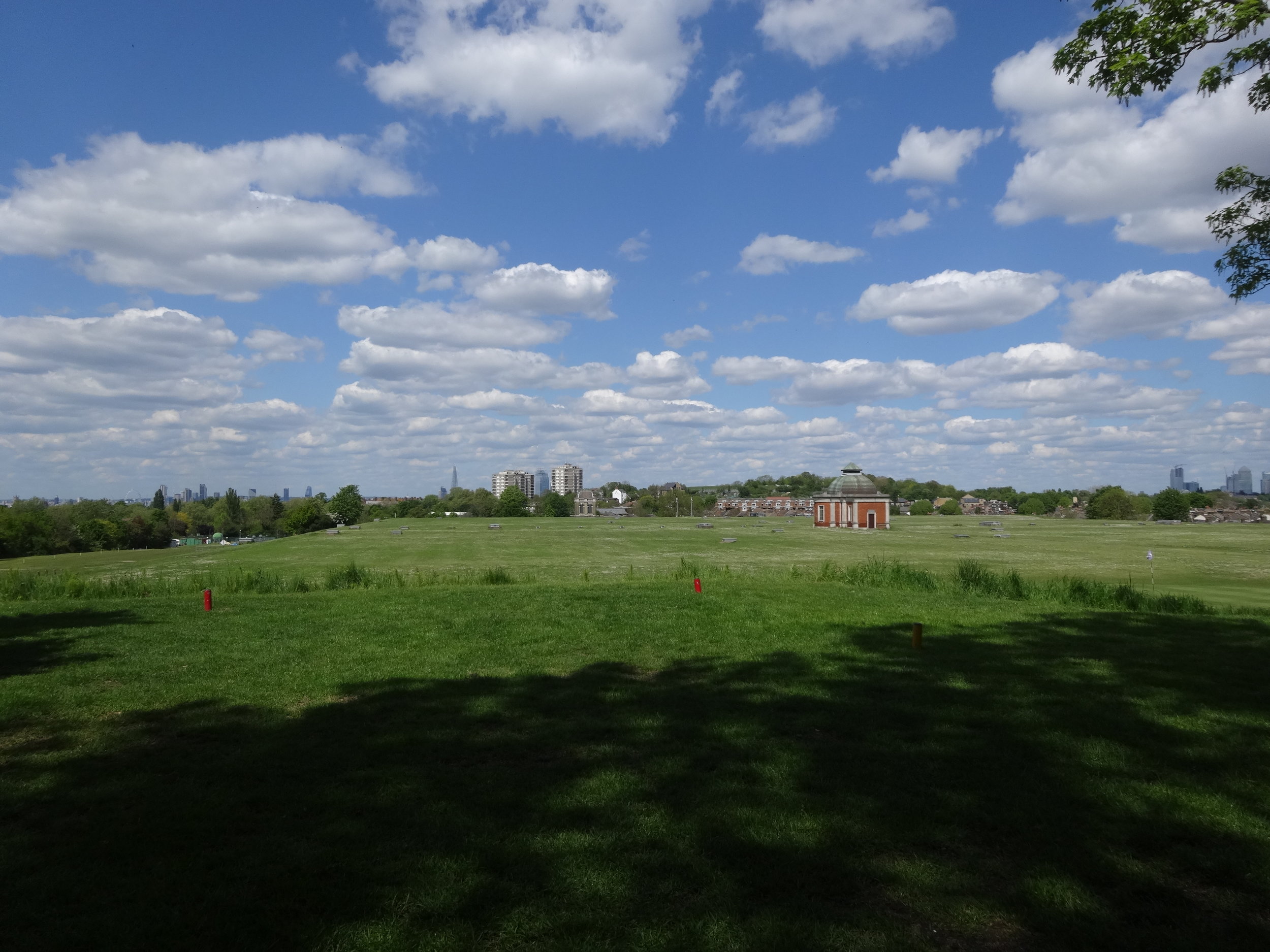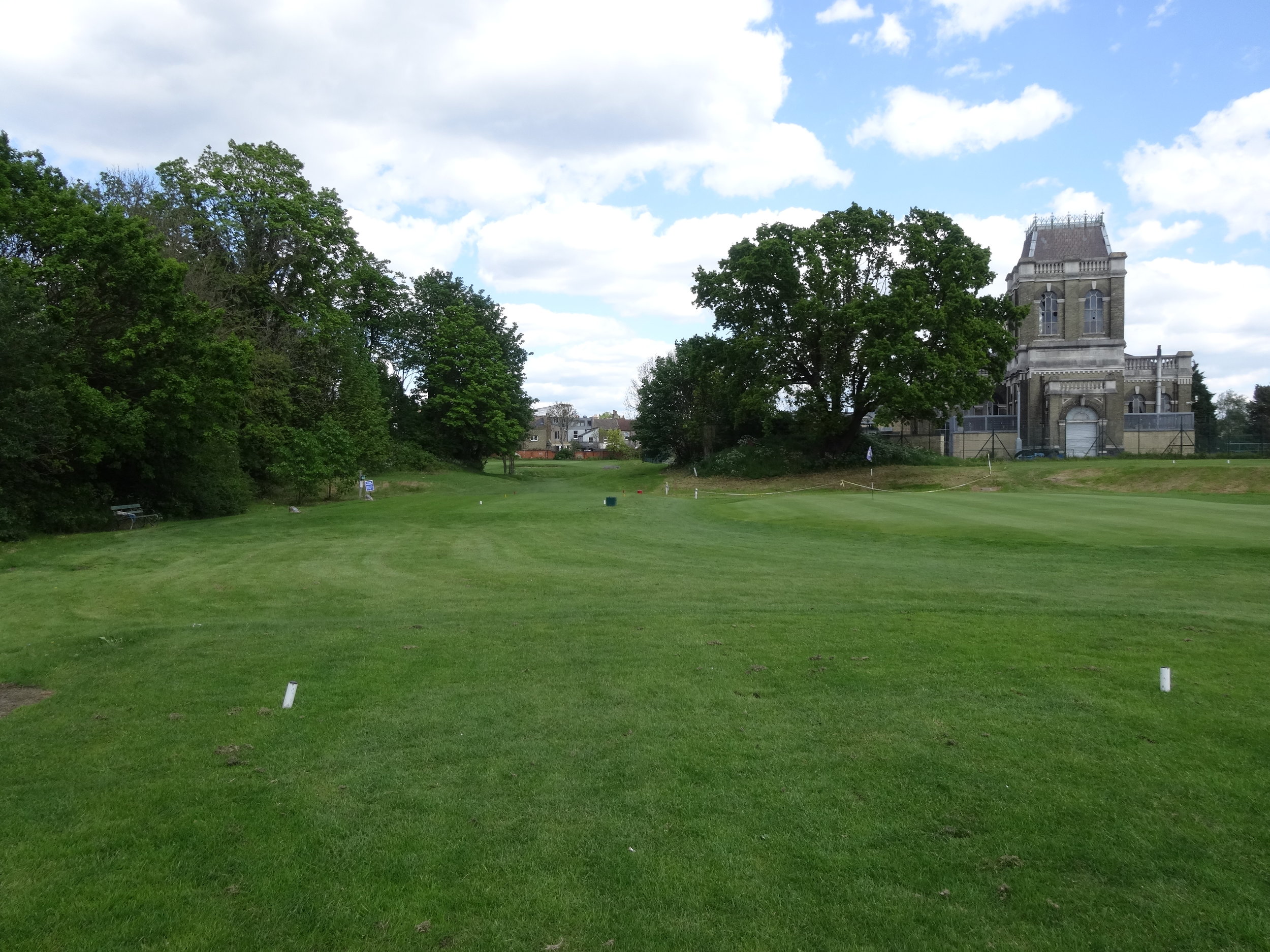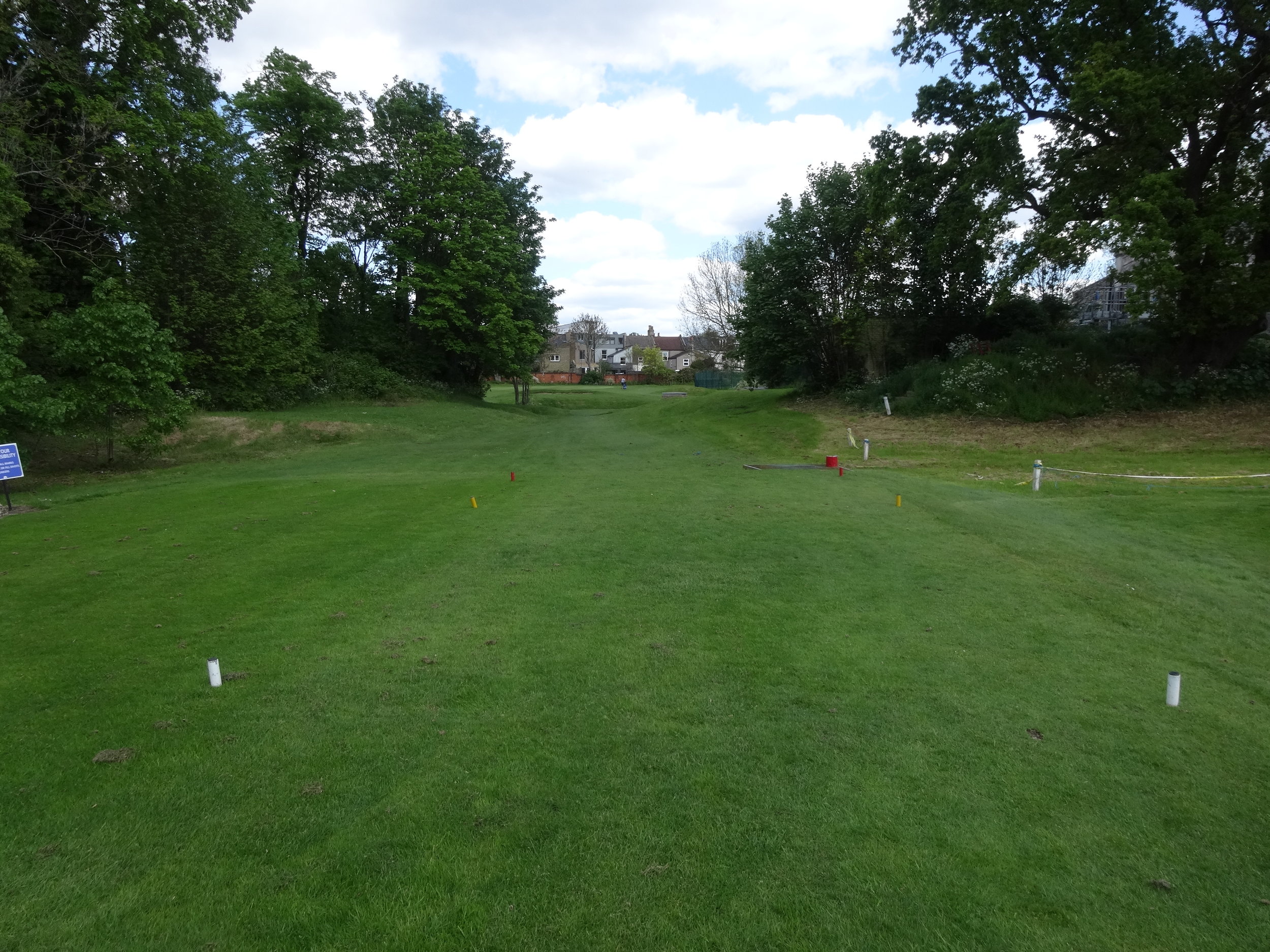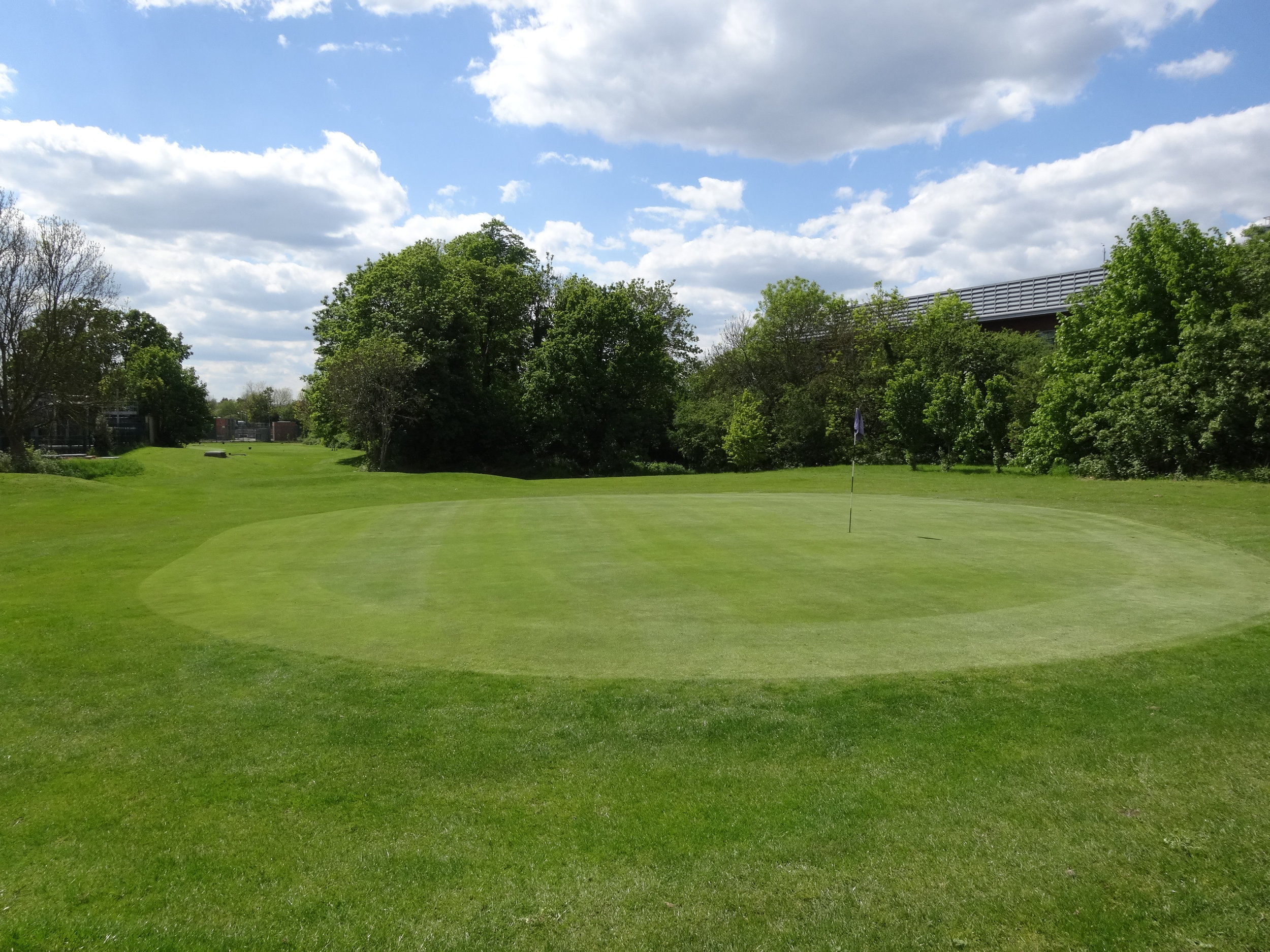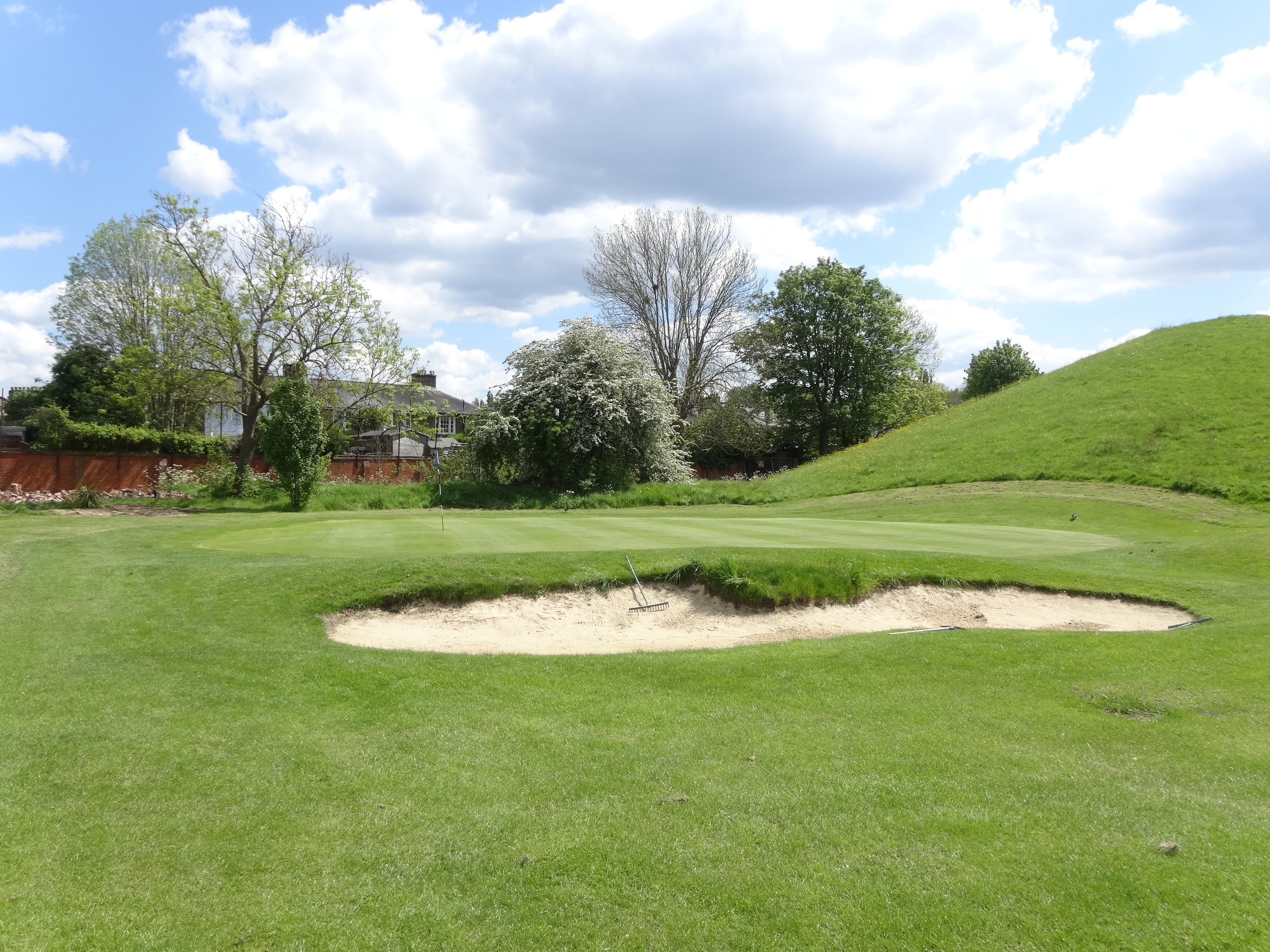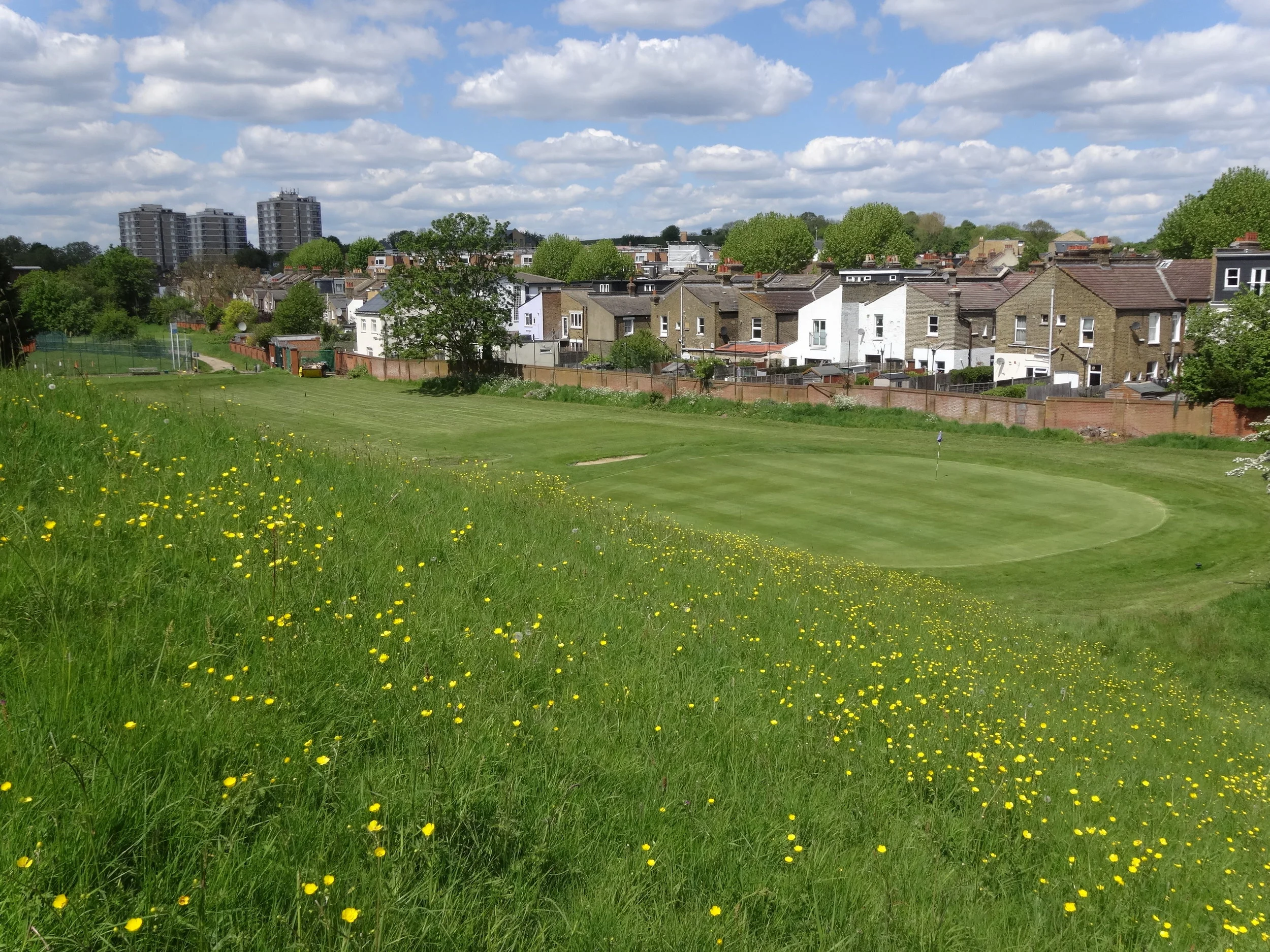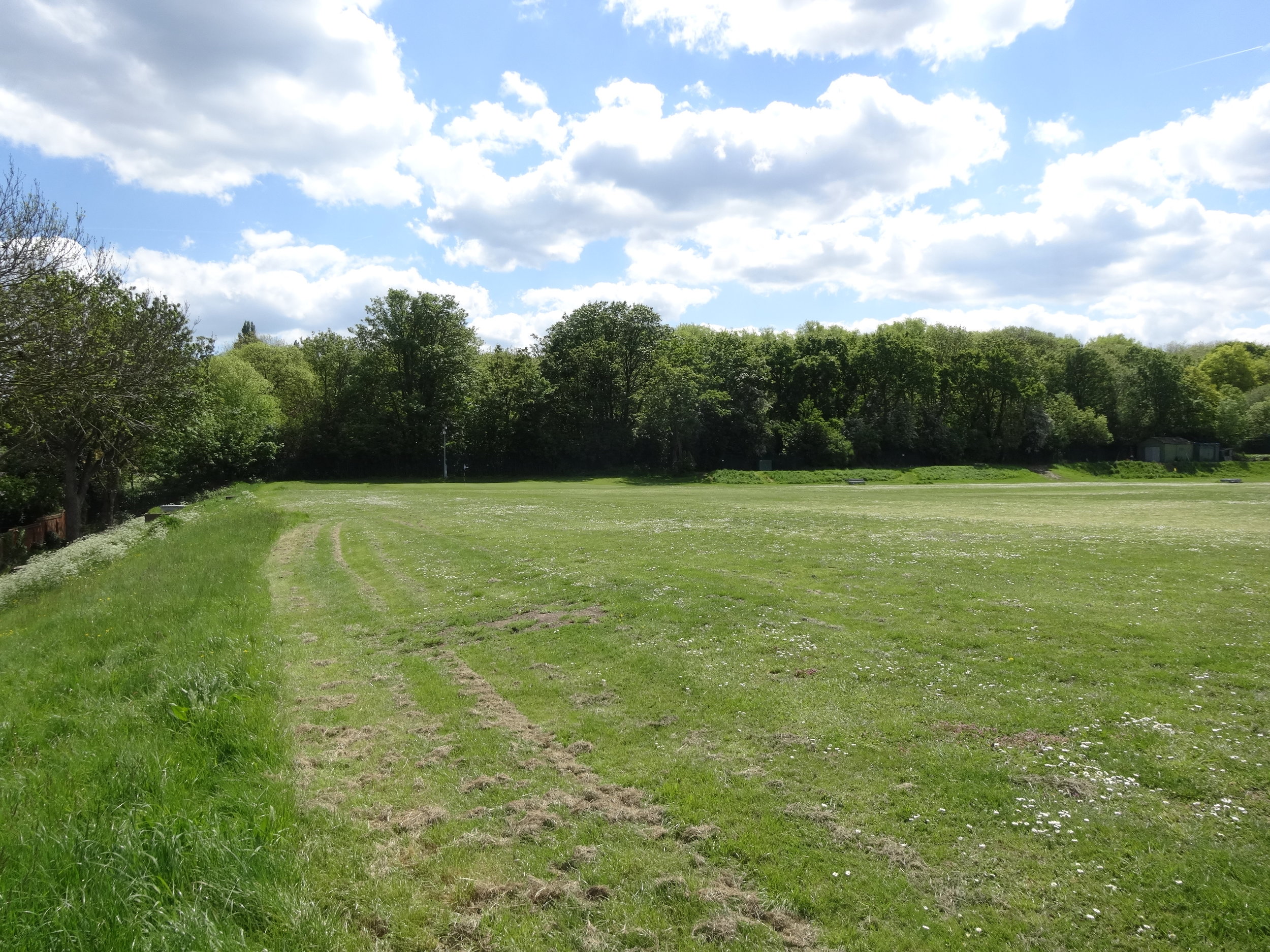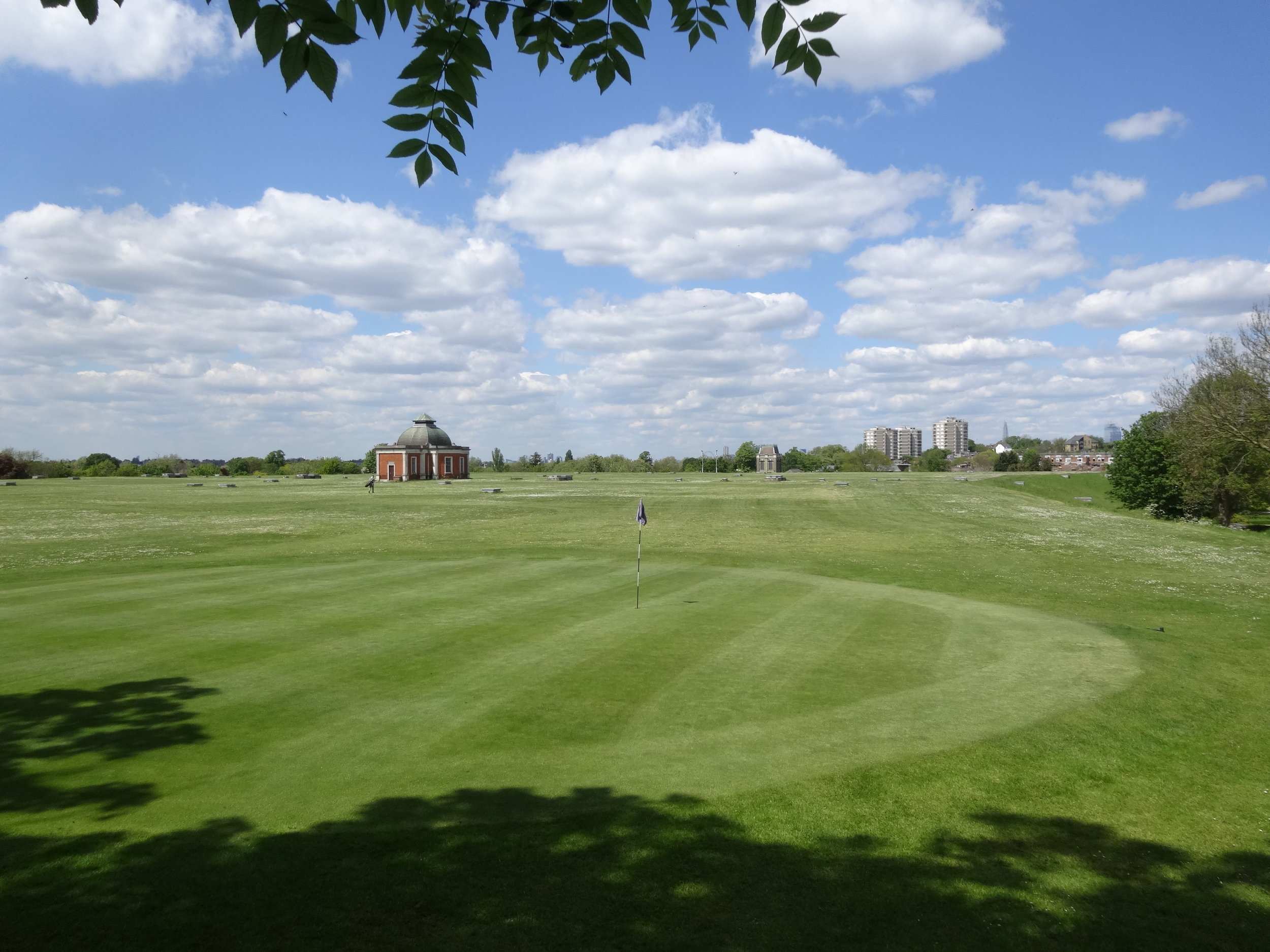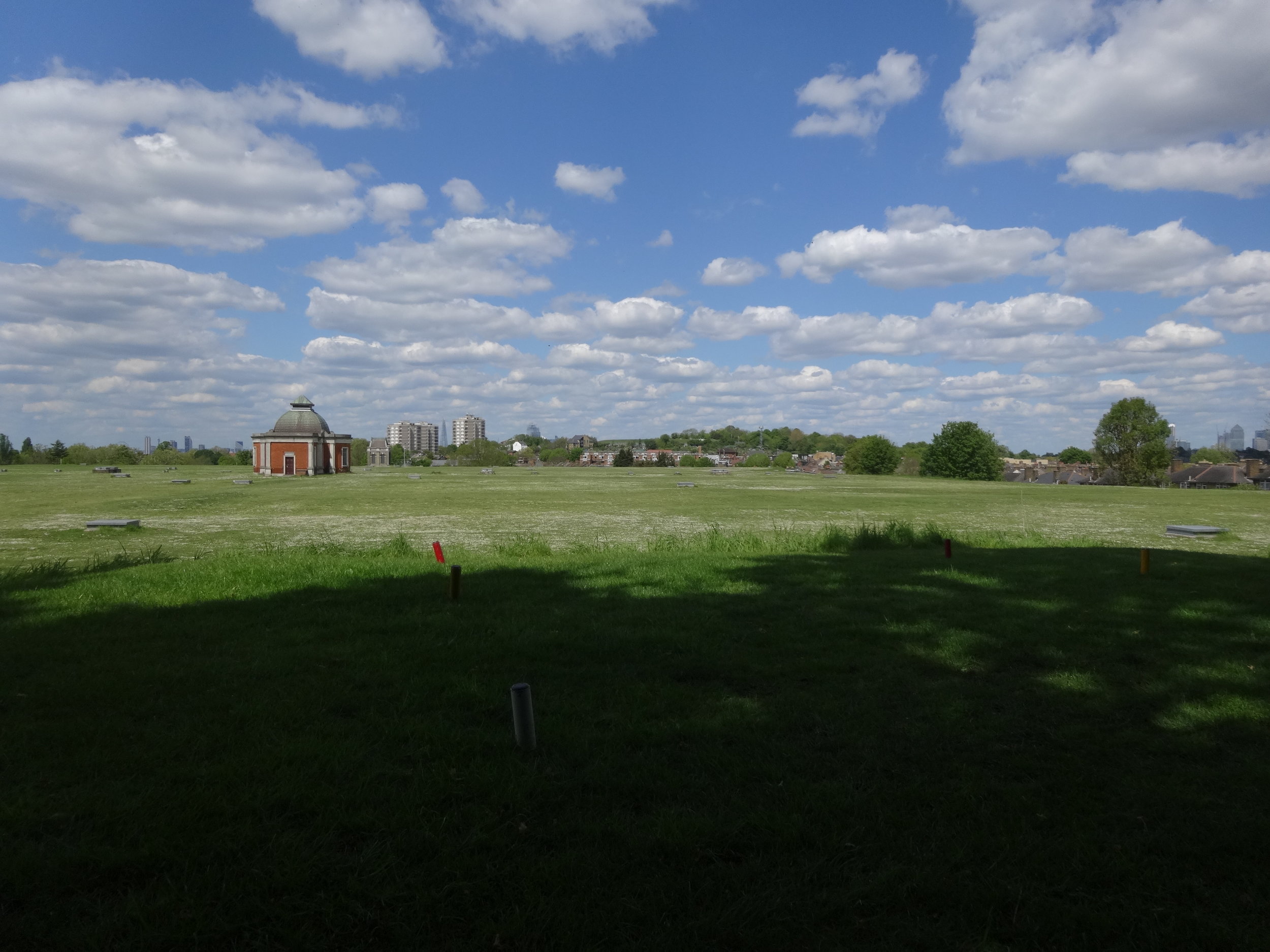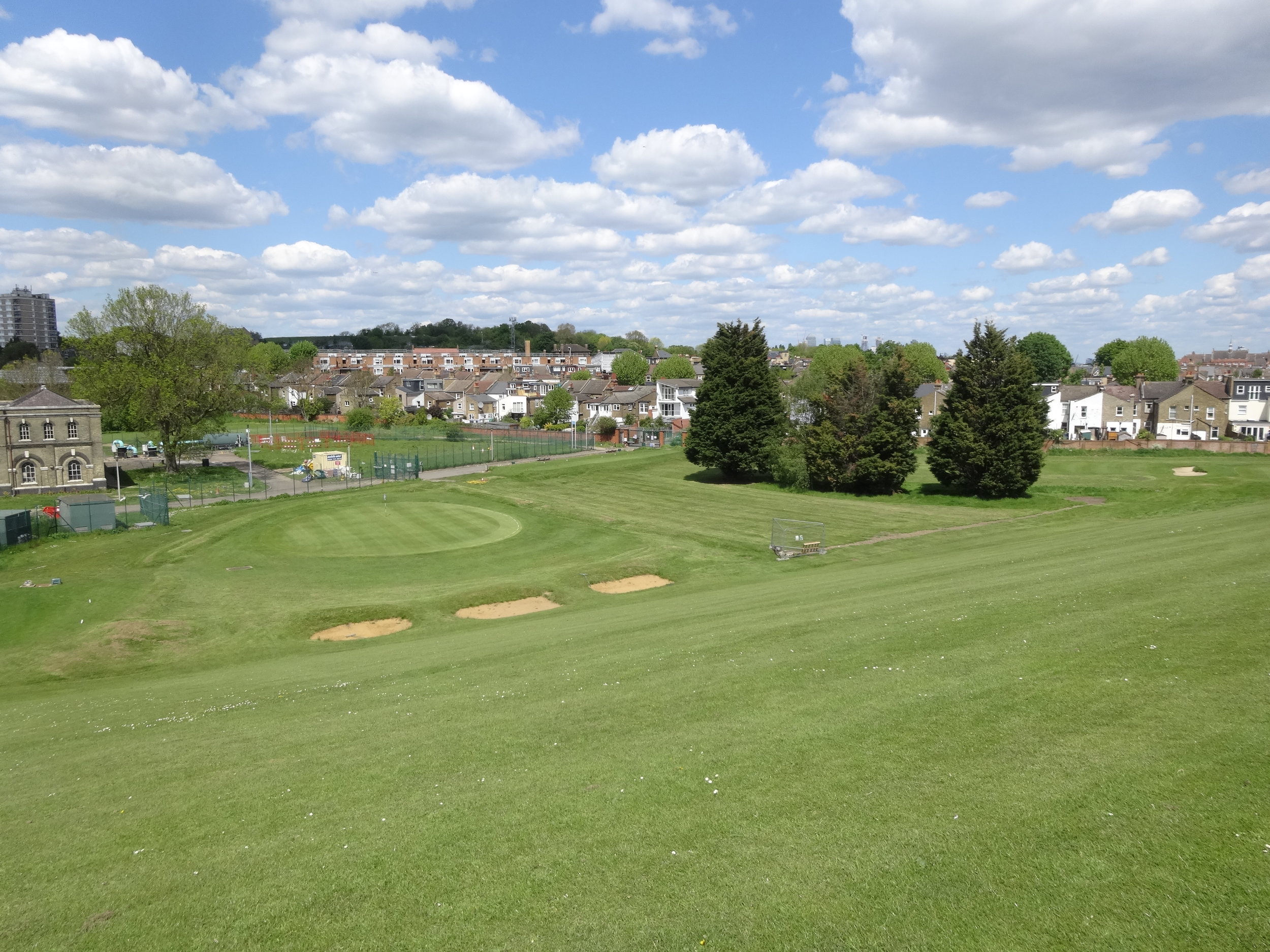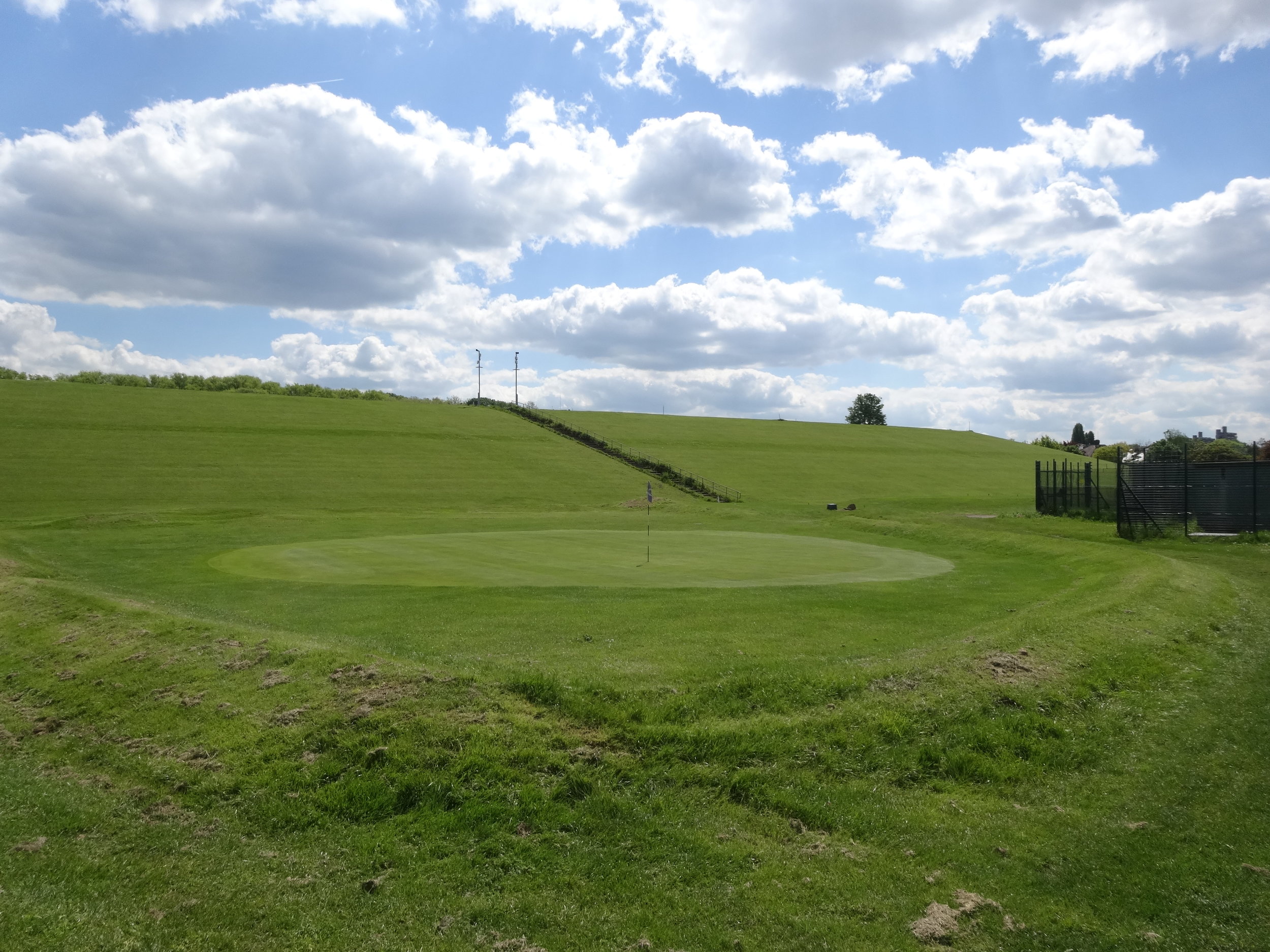The Course
Founded in 1912
The 9 hole course was laid out around and on the roof of Beechcroft Reservoir, which was completed in 1909. At the time it was Europe's largest underground reservoir. It’s still operational today and holds 55 million gallons of water. Competitions have been played at the Aquarius since 1913, with breaks for both World Wars.
Local Rules
Published on the Scorecard
1. For the purpose of Rule 1.3 a, the Terms of the Competition shall include the
Competition Conditions on the entry form for the relevant competition, the last published
General Competition Conditions of Kent Golf Union (KGU), KGU’s Code of Conduct and
Pace of Play Policy each which are deemed to be incorporated into these Local Rules.
2. Out of Bounds (Rule 18.2)
a. The course-side edge of any wall, fence, hedge or line of white stakes defines
the boundary of the course;
b. On or beyond and white line defining the boundary of the course including, in
either case, the edge of any internal out of bounds.
3. Penalty Areas (Rule 17)
All penalty areas are Red Penalty Areas which relief may be taken under Rule
17. The edges of the penalty areas are defined as follows:
a. Where stakes and lines are used, the edge of the penalty area is the course side
edge of the line and the stakes are solely for visibility to players;
b. Where stakes alone are used, the edge of the penalty area is defined by the lined
between the course side edge of the stakes at ground level and the stakes
themselves are in the penalty area;
c. Where there are no stakes or lines, the edge of the penalty area is, on both
sides, the natural margin of the ditch concerned.
4. Ground Under Repair (Rule 16.1) - PLAYERS MUST TAKE RELIEF
a. Any area encircled by a white or blue line or otherwise marked as GUR and
b. Any area of damaged ground in the general area that is considered by a referee
to be abnormal course conditions is a No Play Zone and relief must be taken in
accordance with Rule 16.1f.
5. Immovable Obstructions (Rule 16.1) include:
a. All artificially surfaced roads, paths and winter tees on the course, including those
covered with wood chips and areas where the artificial surfacing material has
been transferred. All other paths and tracks are integral parts of the course.
b. White lined areas adjoining any immovable obstruction are part of the obstruction
and not ground under repair.
c. Stone-filled drainage ditches or channels.
d. Sleepers or wooden boards within bunkers.
e. Landscaped gardens and everything growing in them that are surrounded by an
immovable obstruction are treated as a single abnormal ground condition.
5.1
Relief from interference by an immovable obstruction may be taken under Rule 16.1.
5.2
The player also has the option to take relief when such immovable obstructions are close
to the putting green and on the line of play as follows:
● Ball in the General Area
○ The player may take relief under Rule 16.1b if an immovable obstruction
is on the line of play, and within two club-lengths of the putting green, and
within two club-lengths of the ball.
○ Exception - No Relief If Line of Play Clearly Unreasonable - There is no
relief under Local Rule 5.2 if the player chooses a line of play that is
clearly unreasonable.
6. Integral Objects
a. Bunker liners in their intended position and artificial retaining walls and pilling
located in penalty areas are each integral objects from which free relief is not
allowed
7. Young Trees
a. Identified by being staked (whether attached or not) or plastic protected are No
Play Zones
b. If a players ball lies anywhere on the course other than in a penalty area and it
lies on or touches such a tree or such a tree interferes with the player’s stance or
area of intended swing, the player must take relief under Rule 16.1f.
c. If the ball lies in a penalty area, and interference to the player’s stance or area of
intended swing exists from such a tree, the player must take relief either with a
penalty under Rule 17.1e or with free relief under Rule 17.1e(2)
8. Overhead Cable etc
a. If a ball strikes an elevated power line, cable or their supports, the stroke is
canceled and the player must play a ball as nearly as possible at the spot from
which the original was played in accordance with Rule 14.6.
9. Relief may be taken from the internal boundary fences around Thames Water
Compounds under Rule 16.1.
10. Suspension of Play
a. Players must comply with KGU’s Suspension of Play Policy
Additional Local Rules
● Relief is available if the ball lies up against or is close (impedes swing) from the vents,
the valve house (building on top of the reservoir) and the turret (object on the 1st/9th
fairway). A player is allowed one club length from the nearest point of complete relief, no
nearer to the hole.
● Relief is available if the ball lies up against or is close (impedes swing) to the fences next
to the compounds (the one by the 8th and 1st greens and the one that is next to the 2nd
and 5th greens). A player is allowed one club length from the nearest point of complete
relief, no nearer to the hole. This may require the player to move the ball some way from
the original lie of the ball to ensure that the drop is no nearer to the hole e.g. if the ball
was against the fence next to the bunker on the 1st green, a player may need to walk
towards the corner of the fence to ensure the drop did not end up closer to the hole.
● No relief is available if the ball lies up against or is close to the external perimeter of the
course. This is most likely to occur by the walls at the back / side of the 2nd and 3rd
greens and the fence at the back of the 4th green.
● Pick and place is allowed on the fairways on top of the reservoir, within 6 inches of
where the ball lies and no nearer the hole, but NOT on the banks of the reservoir or any
of the rough areas.
THE PENALTY FOR BREACH OF A LOCAL RULE SHALL, UNLESS OTHERWISE
SPECIFIED, BE THE GENERAL PENALTY (namely loss of hole in match-play and two strokes
in stroke-play)
Local Rule For Line Of Sight Relief
In addition to relief under Rule 16.1 for physical interference (lie of ball, stance and area
of intended swing) from the vents, the valve house (building on top of the reservoir) and
turret (object on the 1st/9th fairway), relief for line of sight interference is also available
as described below.
Line of sight interference from the vents, the valve house (building on top of the
reservoir and turret (object on the 1st/9th fairway) exists when the obstruction is on the
player’s line of sight to the hole (that is, the obstruction is located on the straight line
between the ball and the hole or is within one club-length measured on an equidistant
arc from the hole, of a spot where the obstruction would be on the player’s direct line of
sight to the hole. This one club-length wide area is commonly referred to as the
“corridor”.
If the player’s ball is in the general area and there is line of sight interference by an
obstruction as described above, the player may take free relief by dropping the original
ball or another ball in and playing it from this relief area:
• Reference Point: The nearest point of complete relief where line of sight
interference no longer exists.
• Size of Relief Area Measured from Reference Point: The entire area within one
club-length from the reference point, but with these limits:
• Limits on Location of Relief Area:
◦ Must be in the general area,
◦ Must not be nearer the hole than the reference point, and
◦ There must be complete relief from both physical and line of sight
interference by the obstruction.
If the player’s ball is in a bunker or a penalty area and there is line of sight interference
the player may take free relief as provided above, except that the nearest point of
complete relief where interference no longer exists, and the relief area must be in that
bunker or penalty area.
If there is no such point in that bunker or penalty area where interference no longer
exists, the player may still take this relief as provided above by using the point of
maximum available relief in the bunker or penalty area as the reference point.


